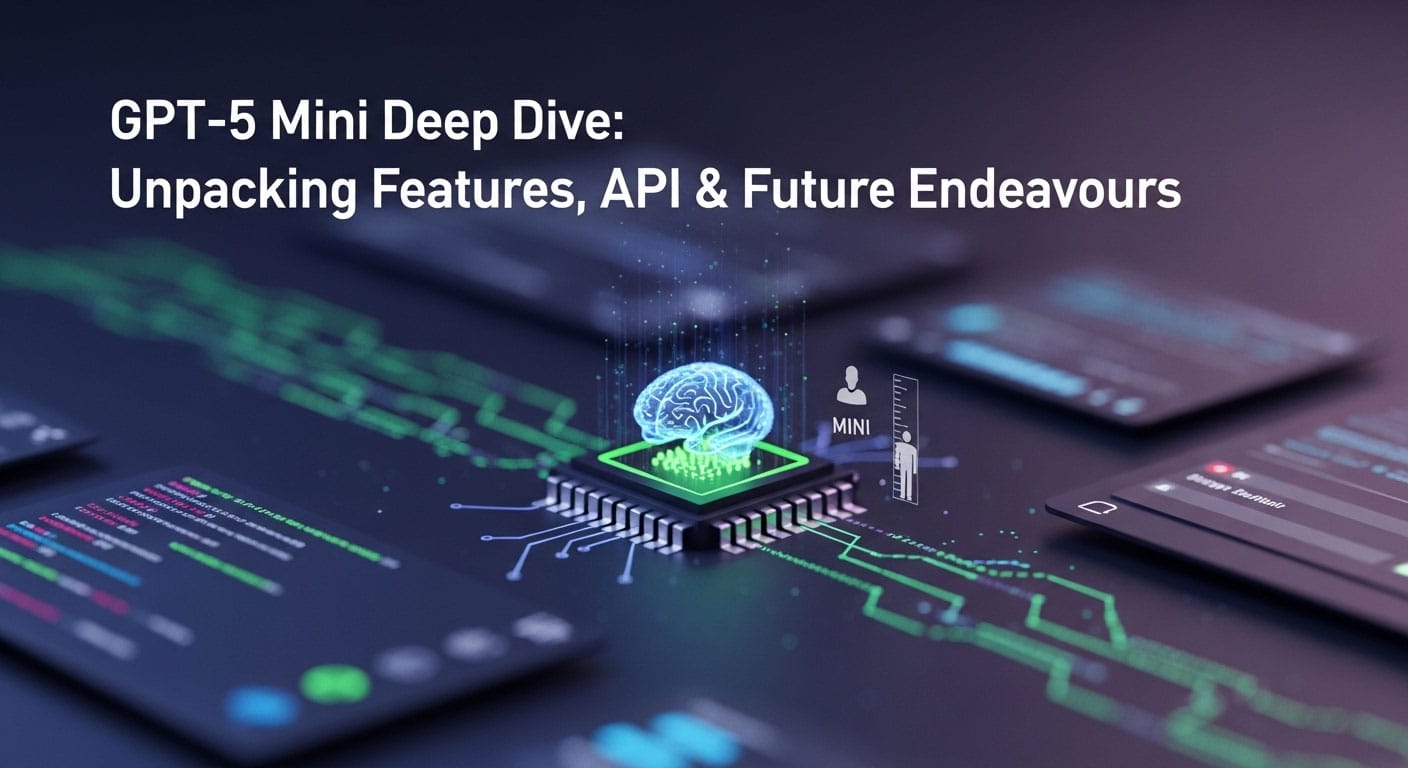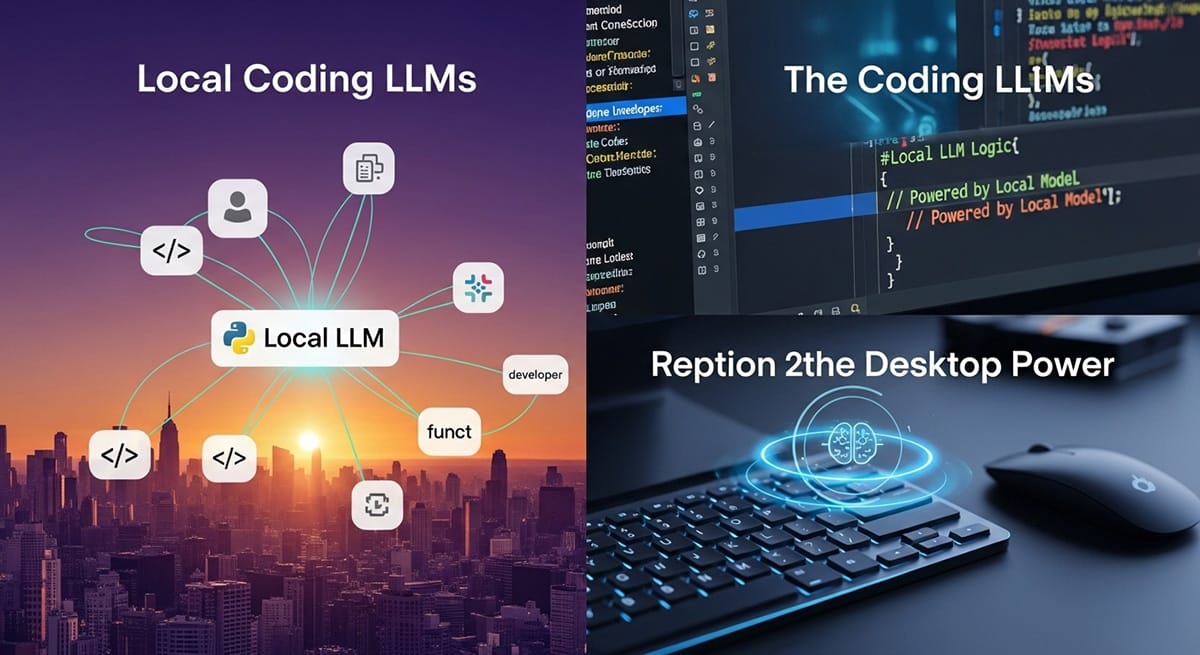GPT-5 Mini Deep Dive: Unpacking Features, API, & Future Endeavours
The next generation of OpenAI’s language models has arrived with the GPT-5 family, and among its most anticipated members is the GPT-5 Mini. Positioned as a powerful and cost-effective workhorse, this model is set to replace its predecessors and become a new standard for developers and businesses. This article provides a comprehensive overview based on initial research of GPT-5 Mini, exploring its features, characteristics, API capabilities, and potential applications.
What is GPT-5 Mini?
GPT-5 Mini is one of the three core models available through the GPT-5 API, alongside the standard GPT-5 and the lightweight GPT-5 Nano. It is the direct successor to GPT-4o-mini, designed to offer a significant boost in competence and efficiency. While the main GPT-5 model in ChatGPT acts as a complex routing system between different specialized models, the API version of GPT-5 Mini offers more straightforward and direct access to its capabilities. Its primary goal is to provide a balanced solution that excels in performance without the premium cost of the flagship model.
Core Features and Characteristics of GPT-5 Mini
Based on initial model card information and hands-on previews, GPT-5 Mini is built to be a highly competent and reliable tool. While not a dramatic architectural leap, it exudes a level of competence that makes it a sensible default for a wide array of tasks. Here are its key characteristics:
- Model Predecessor: Directly replaces
gpt-4o-mini. - Knowledge Cut-off: Its training data extends up to May 30th, 2024.
- Modality Support: It supports both text and image input, with text-only output.
- Context Window: The model features a substantial context window, with an input limit of 272,000 tokens and an output limit of 128,000 tokens.
- Variable Reasoning Effort: Through the API, users can specify the level of reasoning effort the model should apply, with options for minimal, low, medium, or high.
Advantages and Potential Disadvantages
Every model comes with a unique set of trade-offs. GPT-5 Mini is engineered to maximize benefits for a wide user base, but it’s important to understand its full profile.
Advantages
- Aggressively Competitive pricing: OpenAI has priced GPT-5 Mini to compete fiercely. At $0.25 per million input tokens and $2.00 per million output tokens, it offers exceptional value.
- Significant Caching Discounts: The API offers a 90% discount on input tokens that have been used within the last few minutes, which is a major cost-saver for chat applications that replay conversation history.
- High Competence and Reliability: Early testers report that the model “rarely messes up” and is a very sensible default for most tasks, reducing the need to re-run prompts on other models.
- Vast Context Handling: The 272k token input window allows for the analysis and processing of very large documents and complex conversational histories.
Potential Disadvantages & Considerations
- Incremental, Not Revolutionary: The model is described as a solid, competent evolution rather than a groundbreaking leap in AI capability. Users seeking a paradigm shift may need to look at the full GPT-5 model.
- Fallback on Usage Limits: In the ChatGPT product, the system is designed to fall back to a “mini version” of the primary models once usage limits are hit, which could result in a noticeable drop in performance for some users.
- Automated Model Routing: Concerns have been raised that the “full auto” mode of GPT-5, which automatically selects the best model, might be tuned to prioritize cost-saving for OpenAI over performance, potentially gatekeeping more powerful models even when a user’s task would benefit from them.
GPT-5 Mini API Usage and Opportunities
The true power of GPT-5 Mini is unlocked via its API, which gives developers granular control over its behavior. A comprehensive review of the research about GPT-5 mini, what are its features, characteristics, advantages, disadvantages, opportunities for API usage, and all endeavours reveals a platform built for sophisticated applications.
Key API & Feature Support
The GPT-5 Mini model supports a rich set of features through the API, making it highly versatile for developers.
| Feature | GPT-5 Mini Support |
|---|---|
| API Version | v1 preview |
| Structured Outputs | ✅ |
| Context Window | Input: 272,000 / Output: 128,000 |
| Reasoning Effort Control | ✅ (minimal, low, medium, high) |
| Image Input | ✅ |
| Chat Completions API | ✅ |
| Functions/Tools | ✅ |
| Parallel Tool Calls | ✅ |
| Streaming | ✅ |
New Reasoning and Tool Capabilities
The GPT-5 model series introduces several new parameters and tools that enhance its reasoning and function-calling abilities, all available for GPT-5 Mini. These new capabilities create significant opportunities for building more advanced AI-powered workflows.
- Reasoning Effort: A new
minimalsetting joins low, medium, and high, allowing developers to fine-tune the balance between speed and depth of thought. - Verbosity Control: A new parameter provides more direct control over how concise or detailed the model’s responses are.
- Preamble Object: The model can now provide insights into its planning steps before executing a function call, offering transparency into its “thought process.”
- Lark Tool: Developers can use a new custom tool based on Python’s Lark library to flexibly constrain model output to a specific grammar, ensuring more reliable and structured data.
The Future of GPT-5 Mini and All Related Endeavours
GPT-5 Mini is strategically positioned to become a dominant model in the AI landscape. Its combination of high competence, a large context window, and aggressive pricing makes it an ideal choice for a wide range of applications, from sophisticated chatbots and content creation tools to complex document analysis and code generation. This broad utility underscores the immense potential of GPT-5 Mini for a multitude of endeavours.
OpenAI’s roadmap suggests an eventual integration of its various specialized models into a single, unified system. Until then, GPT-5 Mini will serve as a critical component of the ecosystem, providing developers with a reliable and accessible tool to innovate and build the next generation of AI applications.
Summary Table: GPT-5 Mini at a Glance
| Specification | Details |
|---|---|
| Predecessor | GPT-4o-mini |
| Knowledge Cutoff | May 30, 2024 |
| Input/Output Modality | Text & Image Input / Text-only Output |
| Token Limits | 272,000 (Input), 128,000 (Output) |
| Pricing (per 1M tokens) | $0.25 (Input), $2.00 (Output) |
| Key API Features | Reasoning Effort, Verbosity Control, Preamble, Lark Tool |
Conclusion
GPT-5 Mini represents a significant and practical step forward in the evolution of large language models. While it may not be the revolutionary leap some had hoped for, its focus on competence, efficiency, and cost-effectiveness makes it a highly valuable asset. Our in-depth research on GPT-5 Mini reveals its features and API capabilities are meticulously designed for widespread adoption, empowering developers to build more powerful and accessible AI solutions. It is a smart, strategic release from OpenAI that is poised to become a foundational tool across the industry.











